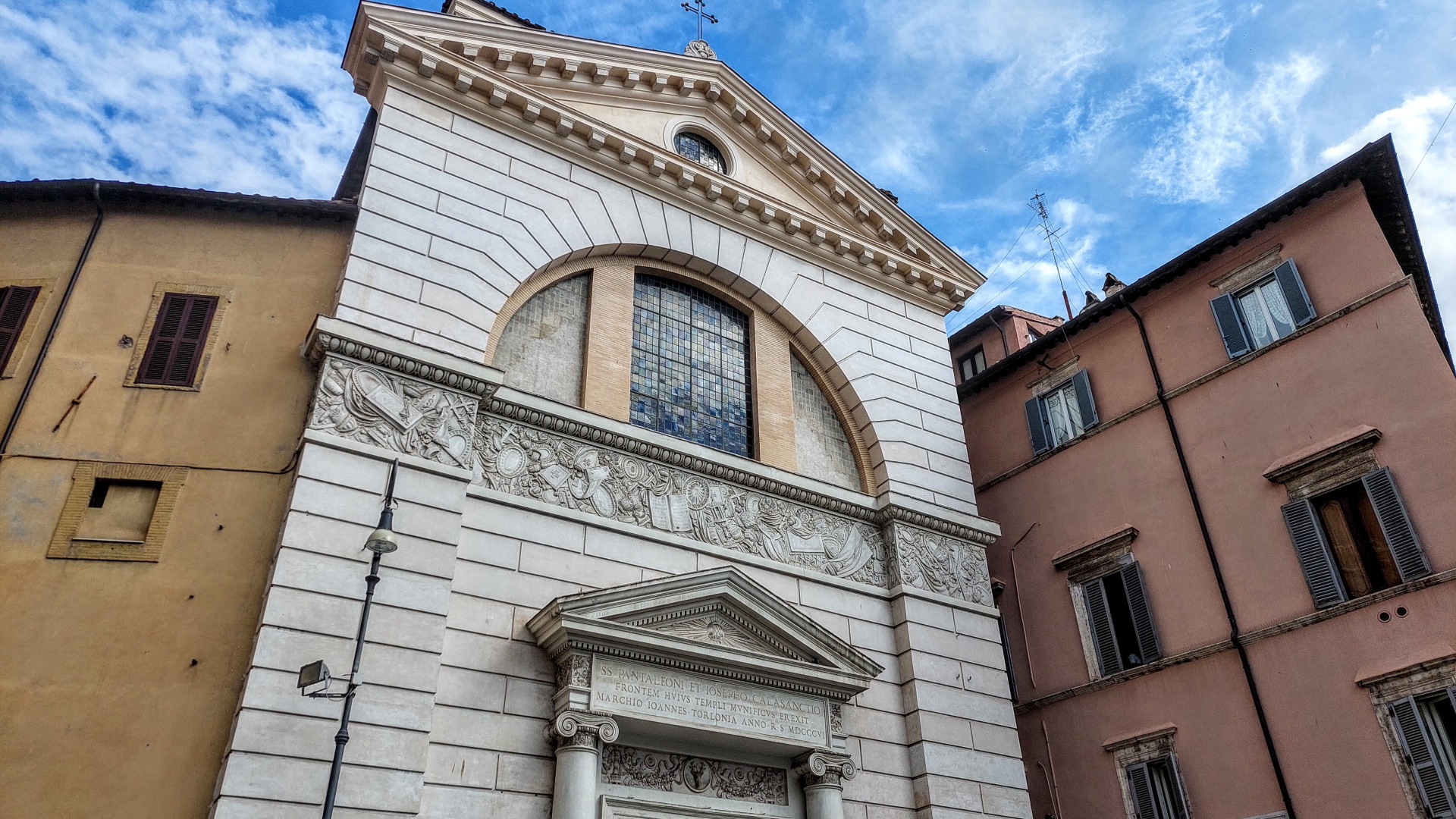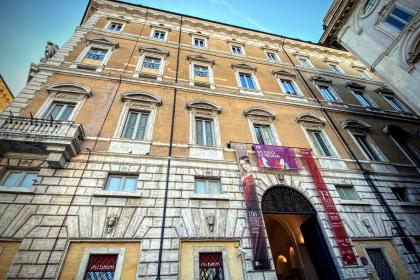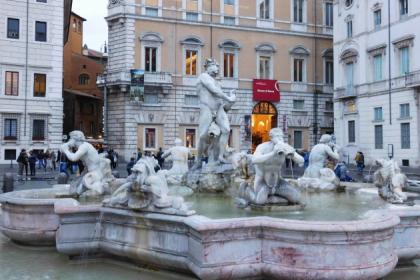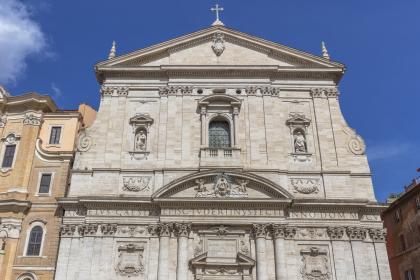
Overlooking a small square that it shares with the 18th-century Palazzo Braschi, it is one of the places to rediscover in the very center of Rome. Formerly known as “de Parione” after the name of Rome’s Rione Parione, the church is entitled to St. Pantaleon of Nicomedia (according to tradition martyred on 27 July 305 AD), and existed as early as the late 12th century. It is first recorded in 1186, in a bull by Pope Urban III, as having the name of “Sancti Pantaleonis de Pretecarolis”: nobody knows what this means, although one suggestive interpretation links the name to the nearby presence of one of those stones on which the fish market was held, owned by a merchant named Carolus.
In 1621, the church and adjoining convent were granted to St. Joseph Calasanz, founder of the Poor Clerks Regular of the Mother of God of the Pious Schools (better known as the Scolopi) and of the first free popular schools in Europe. Between 1681 and 1689, the church was rebuilt for the father Scolopi by Giovanni Antonio De Rossi. A new façade was then added in 1806 by Giuseppe Valadier (the famous architect of Piazza del Popolo), and paid for by Prince Giovanni Torlonia.
The sober and elegant neoclassical façade, divided horizontally by a wide frieze, introduces the richly Baroque 17th-century interior, consisting of a single nave with two chapels on either side and a tall apse. Masterfully illusionistic effects distinguish the vault frescoes painted by Filippo Gherardi from 1687 to 1692, a grandiose work where the “Glory of the Name of Mary” is accompanied by a crowd of figures offering precious gifts to the Virgin, including representations of the four continents known at the time: Europe, the two Americas (an Amazon with quiver and darts), Asia, who hands a chalice with oriental spices, and at the bottom Africa.
Under the high altar a very precious porphyry sarcophagus preserves the body of St. Joseph Calasanzus, while in the adjoining convent one can still visit the rooms where the saint lived, with many relics and objects associated with him. In the sacristy, on the other hand, is the Well of St. Pantaleon: blessed with the saint’s relics and therefore believed to be miraculous, the water from the well was offered to the faithful every 27 July, on the anniversary of St. Pantaleon, the patron saint of the medical profession protector of doctors. Today the cistern is closed but the tradition of distributing the water has remained.
The church is still entrusted to the congregation of the Scolopian fathers.
Museo di Roma – Palazzo Braschi

 Condividi
Condividi
A stroll through the museums around piazza Navona

A trip inside the museums between Piazza Navona and its surroundings
 Condividi
Condividi
The Church of Santa Maria in Vallicella (Chiesa Nuova) and the rooms of San Filippo Neri

 Condividi
Condividi
Information
For the timetable of the masses and visiting conditions, please consult the contacts.
 Condividi
Condividi
Location
To find out about all accessibility services, visit the Rome accessible section.











































